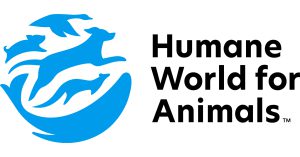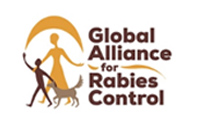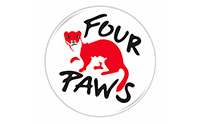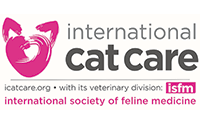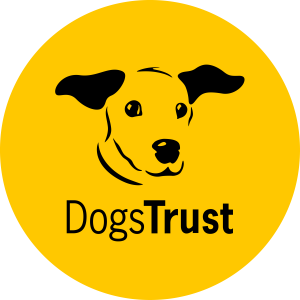
ICAM advocates for government investment in humane dog population management (DPM) for the benefit of sustainable development and animal welfare.
Government decision making regarding investment is influenced by several factors, not least the potential benefit to citizens and the expected short and long-term costs required for achieving that benefit. ICAM and a team at the University of Zurich and University of Bern have been exploring the available literature but there are relatively few published social cost-benefit analyses of DPM, leaving policy makers with minimal information on which to base their own decision making.
We want to address this gap. We have an expert team of veterinary and public health economists ready and able to conduct social cost-benefit analyses of DPM programmes.
We need organisations working in DPM to work in partnership with us, leading to a greater understanding of the economic impact of their DPM work (see an example of what can be revealed by cost-benefit analysis of DPM here).
We are looking for organisations (government, non-government or research) who are implementing DPM and have information on what it costs to implement and what benefits it may bring. DPM systems use a combination of services, including one or more of the following:
- Reproduction control of owned and unowned/community owned dogs (Capture, Neuter, Vaccinate and Return CNVR).
- Promotion of responsible ownership through education and regulations.
- Disease prevention through mass vaccination and parasite control.
- Controls of commercial breeding and sale including licencing
- Identification and registration systems
- Rehoming.
Implementing these services come with costs. The outcome of these services can be a range of benefits that counterweigh these costs, including:
- Reduction in free-roaming dog density.
- Reduction in dog bites.
- Reduction in zoonotic disease transmission.
- Reduction in road traffic acccidents caused by free-roaming dogs.
- Improvement in the welfare of dogs.
- Improved perception of free-roaming dogs.
- Reduction in nusiance behaviours.
By analysing costs and benefits of DPM systems we can build an understanding of their impact and effectiveness in economic terms.
Through this call for action, we invite organizations to partner with us by sharing datasets on costs and benefits so that we can conduct economic analyses of DPM system effort and impacts. The data you will provide will be crucial to fill a gap in current evidence and will support the formulation of future cost-effective DPM policies.
What kind of data are we looking for?
Your data may be retrospective as a part of previous DPM systems, or recently gathered data as part of ongoing DPM systems.
The data we needed are quantitative parameters indicating what has been done (e.g. number of sterilizations, vaccinations, or sheltering), and impact parameters indicating what has been achieved (e.g. reduced number of free roaming dog population, decreased dog bites). Importantly, the monetary costs associated with these DPM services (e.g. cost of sterilizations, cost of vaccination, cost of shelters or others) and benefits (e.g. the costs of treating dog bites) are also needed.
Data on societal benefits are also valid, including improved dog welfare, public perceptions of dogs or dog management methods, or reports of their experience of dogs, including complaints to local authroities relating to dog nuisance.
Please note that datasets can be incomplete, with gaps in time, costs or benefit measures. Where possible, we can extrapolate to fill gaps.
Methodology:
The economic analysis will depend on your data. We will employ the following methodologies or others if needed, to comprehensively evaluate the economic effectiveness of the DPM services you used.
- Cost-benefit analysis: This is to compare the total cost of DPM services assessed from your datasets to the total benefits to determine their overall economic value. The Benefit Cost Ratio (BCR), Internal Rate of Return (IRR), Net Present Value (NPV), or other metrics will be calculated.
- Cost-effectiveness analysis: This analysis will evaluate the costs per outcomes achieved for different DPM intervention parameters by calculating the cost-effectiveness ratio (CER). Some examples of CER are:
- Cost per dog sterilization
- Cost per dog vaccination
- Cost per dog adoption
- Cost per dog registration
- Cost per DALY (Disability-Adjusted Life Years) averted
Data access and ownership:
The data provided by your organization will be solely used to conduct the economic analysis of DPM systems within our research project. The data will be fully under your ownership and will not be shared without your consent. The contributions will be fully acknowledged, and for any scientific publications resulting from the analysis of the data, co-authorship will be offered.
Ethical considerations:
The datasets submitted should appropriately adhere to ethical standards and guidelines. Wherever relevant, consent should have been obtained from all relevant parties.
Data submission:
Please let us know about your DPM work and what data is accessible for analysis by completing this Google form (https://tinyurl.com/DPMdata-outline) – no data will be shared here, this is for you to describe what could be available through a future partnership with us. This information will be used to conduct a preliminary screening, and we will let you know if we see the potential for meaningful cost-benefit analysis. Forms need to be submitted by 20th September 2024 at the latest. For any further queries or information, please contact dpm.eco.data@gmail.com.
About International Companion Animal Management (ICAM) Coalition
ICAM supports the development and use of humane and effective companion animal population management worldwide. The coalition was formed in 2006 as a forum for discussion on global dog and cat management issues.
Our key goals are to:
- Share ideas and data
- Discuss issues relevant to population management and welfare
- Agree definitions and hence improve understanding
- Provide guidance as a collegial and cohesive group

